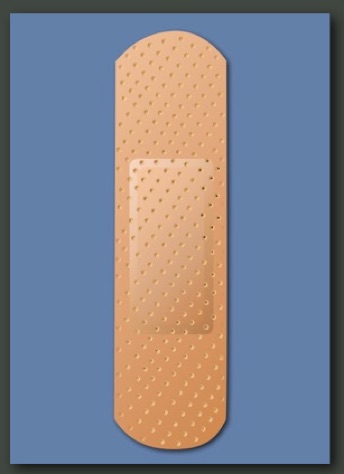Buy a print


STICKING PLASTER
The Sticking Plaster provides instant access to a dressing that is sterile and absorbent. The tape has to be flexible enough to wrap around a finger, yet strong enough to withstand daily wear and tear. It also has to be waterproof and breathable. The adhesive has to stay in place when needed, yet peel off easily when it is no longer required.
The first adhesive medical tape was invented in 1845 by Dr Horace Day. But it wasn’t until 1920 that Earle Dickson came up with the idea of the individual plaster that we now know.
100 year later in 2020 I could only find one South African company on line making plasters to match black and other ethnic skin tones. Since then a variety of supermarkets, pharmacies and medical manufacturers have introduced three skin colours. If a majority of the world population are not white, why did this take so long ?
HISTORY
Hunter gatherers no doubt noticed that certain herbs speeded up the natural healing process. Their ‘Shaman’ was responsible for the use of substances to treat particular problems. The Greeks were the fist to introduce medical products and sell them at early pharmacies. The Egyptians used lint, honey and closed the wound by binding it with papyrus.
However the major improvements in wound treatment had to wait until the 19th century. In 1845 Dr Horace Day created the first adhesive medical tape by 1860 an english surgeon Joseph Lister had introduced surgical gauze treated with carbonic acid to reduce infection and his mortality rates were reduced by 45%. Building on this work Robert Johnson co founder of Johnson & Johnson produced the first commercially available sterilized wound dressing in 1890.This was followed in 1901 by an medical patch invented by Oscar Trapowilz who owned the pharmaceutical company Beiserdorf AG in Germany
The plaster, as we know it, was invented in1920 by Earle Dickson an employee of Johnson & Johnson in the USA. He prototyped a sticky tape dressing for his wife’s minor injuries so that she could treat them herself. He passed the idea to his employers who started to manufacture sterilized Band Aids in 1924. They now estimate to have world wide sales of over 100 billion.
MAKING
Large rolls of plastic are coated with the adhesive before being split into the required width. The individual tapes are perforated before the sterilized gauze pad is added. The quick release backing is applied and the plaster cut to length and shape before it is sealed in its individual packing.




I Care
Products










